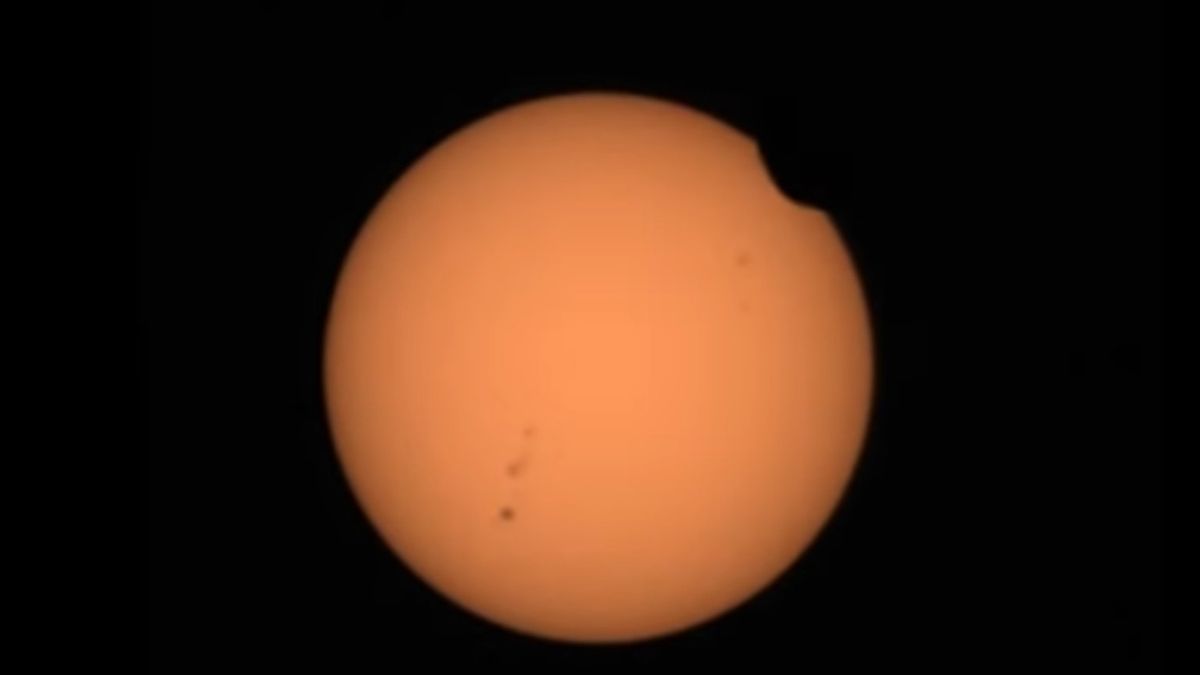JAKARTA - Seeing a solar eclipse from Mars is the most eagerly awaited astronomical phenomenon, and it was captured by NASA's rover Perseverance earlier this month.
Perseverance saw one of Mars' moons shaped like a potato, Phobos, crossing the Sun. The 40-second eclipse phenomenon was captured by the Mastcam-Z camera system located on the robot's body.
"I knew it was going to be great, but I didn't expect it to be so great," said one member of the Mastcam-Z team that operates the camera, Rachel Howson.
Phobos is the larger of the two moons on Mars and is 17 x 14 x 11 miles (27 by 22 by 18 kilometers) in diameter. It orbits Mars three times a day, and is so close to the planet's surface that it is not always visible in some locations on the planet.
Launching the Daily Mail, Friday, April 22, this eclipse did last more than 40 seconds, but it was much shorter than an ordinary solar eclipse involving the Moon and Earth. Not surprising, considering that Phobos is about 157 times smaller than Earth's Moon.
This is not the first solar eclipse seen from Mars. Other rovers have captured eclipses from the planet's surface many times before, including this one from 2012, as spotted by the Spirit, Opportunity, and Curiosity rovers.
But Perseverance's footage is the most zoomed-in video of Phobos' solar eclipse. First, Perseverance sends the low-resolution thumbnail back to Earth, before sending the full-resolution version.
"You can see details in the shape of Phobos' shadow, such as ridges and mounds in the lunar landscape," said the planetary astronomer who has orchestrated most of the Mars rover's observations of Phobos, Mark Lemmon.
"You can also see sunspots. And it's cool that you can see this eclipse exactly like the rover from Mars is seeing."
The Perseverance footage is also the first to show Phobos' colorful solar eclipse captured by the Mastcam-Z camera. This is a big improvement over the previous camera rover.
The Mastcam-Z camera is a color camera that can be zoomed in and has a solar filter that acts like sunglasses to reduce light intensity.
NASA hopes the footage will help scientists better understand the dynamics between Phobos and Mars. As the Moon orbits Mars, its gravity exerts a small tidal force on the planet's interior, slightly changing the shape of the rocks in the Martian crust and mantle. This interaction also slowly changes Phobos' orbit.
As a result, geophysicists can use those changes to better understand how flexible Mars' interior is, revealing more about the material within the crust and mantle.
Unfortunately, scientists already knew that Phobos would be destroyed. The moon approaches Mars at a rate of six feet (1.8 meters) every hundred years. At that rate, it will fall on Mars in 50 million years, or break into rings.
The English, Chinese, Japanese, Arabic, and French versions are automatically generated by the AI. So there may still be inaccuracies in translating, please always see Indonesian as our main language. (system supported by DigitalSiber.id)













